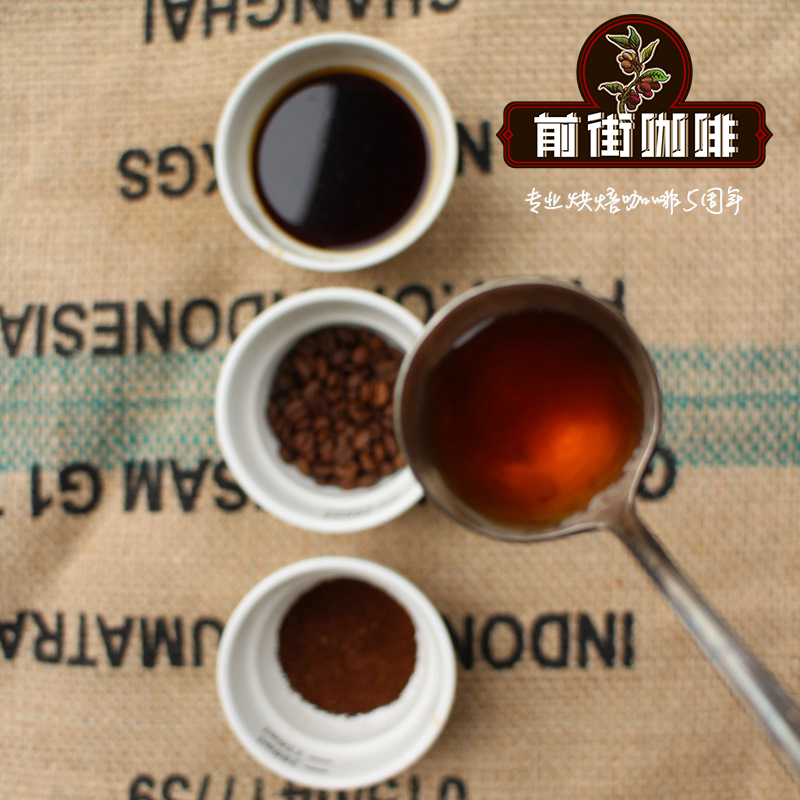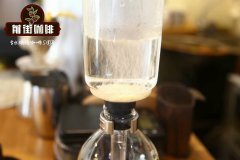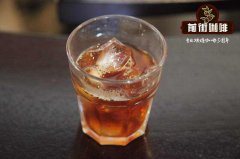How to taste Indonesian manning coffee? How to judge coffee beans from roasting date and baking degree

Professional coffee knowledge exchange more coffee bean information please follow the coffee workshop (Wechat official account cafe_style)
How to taste Indonesian manning coffee? How to judge the freshness of coffee beans from the baking date and baking degree?
Step: a cup of coffee in front of you, do not rush to drink, should be like tea or wine tasting, there should be a step-by-step process to achieve relaxation, refreshing and enjoyment.
The first step is to smell the fragrance and taste the strong aroma of coffee.
The second step is to look at the color. The coffee had better be dark brown, not dark and bottomless.
The third step, taste, first drink a sip of black coffee, feel the taste of the original coffee, coffee entrance should be some sweet, slightly bitter, slightly sour not astringent. Then taste it in small mouthfuls, do not rush to swallow the coffee, but temporarily contain it in your mouth, let the coffee and saliva mix with the air, and then swallow it.
Temperature: the best temperature for drink coffee is 85-88 degrees Celsius. Because the texture of ordinary coffee is not stable, it is best to taste it while it is hot. In order not to reduce the taste of the coffee, soak the coffee cup in boiling water beforehand. The appropriate temperature for coffee is 83 degrees Celsius at the moment of brewing, 80 degrees Celsius when pouring into the cup, and 61-62 degrees into the mouth, which is the most ideal.
Taste: coffee beans contain about 5-8% sugar, most of which are converted to caramel after baking, which is the source of aroma and bitterness, leaving a little sweetness in the unconverted sugar; tannin is released during baking and combines with caramel to produce a slightly bitter sweetness. Therefore, people's taste of coffee is generally bitter, sour, sweet, fragrant and astringent.
Generally speaking, tasting the coffee served by your host while it is hot is also the basic etiquette of drinking coffee. If a cup of high-quality coffee, after cooling, in addition to the aroma will be reduced, the taste performance is consistent with the hot, or even better.
First, how to tell whether the beans are fresh?
1. Aroma
When the coffee you get has no aroma at all, or has an unpleasant smell and fuel-consuming smell, it is very likely that your coffee is not fresh. Of course, if the coffee is roasted with spices, it can not be distinguished by the aroma, and the taste is needed to help distinguish the freshness.
two。 Taste
The first way to tell the freshness from the taste is whether it tastes mixed or oily. And is the coffee too bitter to make people uncomfortable? In addition to the influence of commercial beans, stale beans will also make drinkers feel the same way.
In addition to tasting and smelling, if you can make your own coffee, you can also judge by the date of baking:
3. Baking date
Although most coffees are now marked with a manufacturing / baking date, it is important to pay attention to how long they will be stored if only the packaging is marked with an expiration date. Coffee beans that are usually well preserved have a "expiration date" of 3 months and a "best taste period" of 1 month. How to preserve the coffee beans well, you can also refer to the link attached above.
A cup of fresh coffee right away
The above are the observation points that can accurately judge the freshness, in addition, you may have heard other statements, but they are not entirely true:
Extended Reading: what does the roasting date of coffee beans tell you? "
Second, judging the fallacy of freshness
1. Is the coffee powder fresh when it expands?
Many people will say that when injected with water, it is the fresh coffee that will expand, but the degree of expansion is actually related to the moisture content of coffee beans, not necessarily to the freshness of coffee beans.
The deeper coffee has a lower moisture content, and when it comes into contact with water, it will absorb water and release more gas, thus allowing a greater degree of expansion.
Shallow coffee has a higher moisture content, less water absorption and less gas release when it comes into contact with water, so it is less likely to expand.
If you boil "deep-baked beans stored for a month" and "freshly baked shallow baked beans" at the same time, the deep-baked beans may expand higher.
two。 Must the oil from coffee beans be not fresh?
Many people say that the oil from coffee beans must mean that it is not fresh, but it is also related to the degree of baking.
a. Shallow baking:
Basically, shallow baked beans will not produce oil, even if put for more than two months, so shallow baked beans can not use oil to tell whether they are fresh or not.
b. Medium baking:
The slightly deeper medium-baked beans will be slightly oiled after about a week, and the shallow medium-baked beans will be slightly oiled after about two weeks. If the medium-baked beans feel oily and bright, it is basically a month later, it will not be fresh.
c. Deep bake / re-bake:
Deep baking begins to produce oil as soon as it is baked, while re-baking produces oil in a pot, and the beans are shiny, so deep-baked beans cannot be used to tell whether they are fresh or not.
Filter cup: KONO filter cup
Water temperature: 88 degrees
Degree of grinding: small Fuji degree of grinding 4
Cooking method: the ratio of water to flour is 1:14, 17g powder, 25g water for the first time, steaming for 30s, and 238g water for the second time. The extraction time is about 2:30 seconds.
Analysis: there are not many ribs at the bottom of the Kono cup, and the filter paper clings to the filter cup to achieve the purpose of limiting air flow, which can make water and coffee powder have longer contact soaking time in the filter cup and ensure the extraction time and extraction rate of rough grinding. In this way, the coffee powder can be fully extracted, enhance the mellow taste and make the taste more concentrated.
Flavor: well balanced, clean, thick and solid on the palate, with a long dark chocolate finish.
Important Notice :
前街咖啡 FrontStreet Coffee has moved to new addredd:
FrontStreet Coffee Address: 315,Donghua East Road,GuangZhou
Tel:020 38364473
- Prev

Introduction of Bourbon Coffee beans at Yunxiao Wonderland Manor in El Salvador
Professional coffee knowledge exchange more coffee bean information Please pay attention to coffee workshop (Wechat official account cafe_style) bourbon coffee is famous for its thick flavor, sweet and sour changes attract gluttons, wild deer are often seen to forage in the original forest retained by the manor, rare birds are often seen in shade trees, and there are more than 75 kinds of shade trees and primitive forests in the manor, not only outstanding coffee flavor, research
- Next

Introduction of coffee varieties from Picincha, Ecuador _ New Ecuadorian coffee variety-Sidra variety
For more information on coffee beans, please follow the Coffee Workshop (Wechat official account cafe_style) Ecuador, a member of the Union of South American Nations, located in the northwest of South America, bordering Colombia in the north, Peru in the south and the Pacific Ocean on the west. Quito, the capital, is located in the foothills of Mount Picancha. As we all know, Ecuador is biologically diverse in the world.
Related
- Detailed explanation of Jadeite planting Land in Panamanian Jadeite Manor introduction to the grading system of Jadeite competitive bidding, Red bid, Green bid and Rose Summer
- Story of Coffee planting in Brenka region of Costa Rica Stonehenge Manor anaerobic heavy honey treatment of flavor mouth
- What's on the barrel of Blue Mountain Coffee beans?
- Can American coffee also pull flowers? How to use hot American style to pull out a good-looking pattern?
- Can you make a cold extract with coffee beans? What is the right proportion for cold-extracted coffee formula?
- Indonesian PWN Gold Mandrine Coffee Origin Features Flavor How to Chong? Mandolin coffee is American.
- A brief introduction to the flavor characteristics of Brazilian yellow bourbon coffee beans
- What is the effect of different water quality on the flavor of cold-extracted coffee? What kind of water is best for brewing coffee?
- Why do you think of Rose Summer whenever you mention Panamanian coffee?
- Introduction to the characteristics of authentic blue mountain coffee bean producing areas? What is the CIB Coffee Authority in Jamaica?

